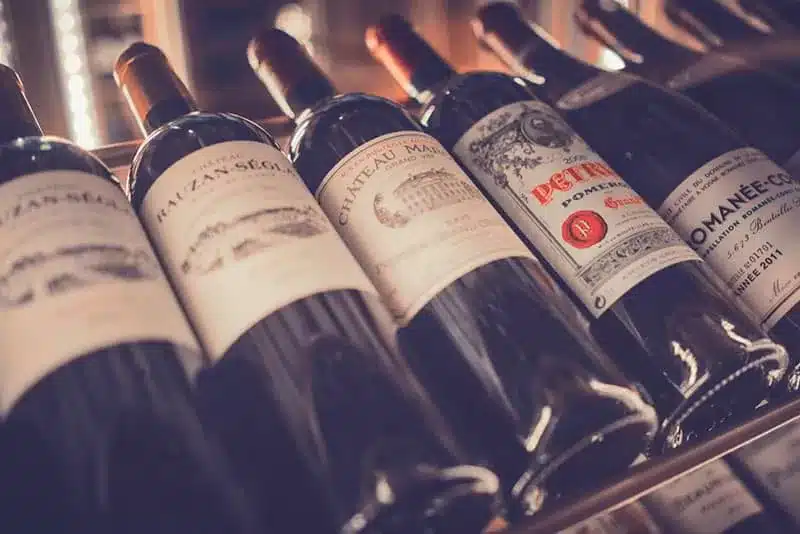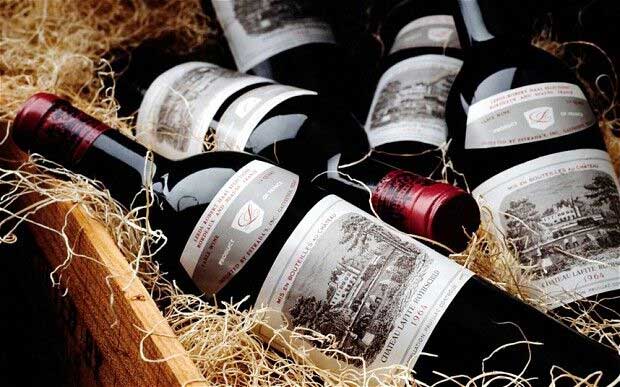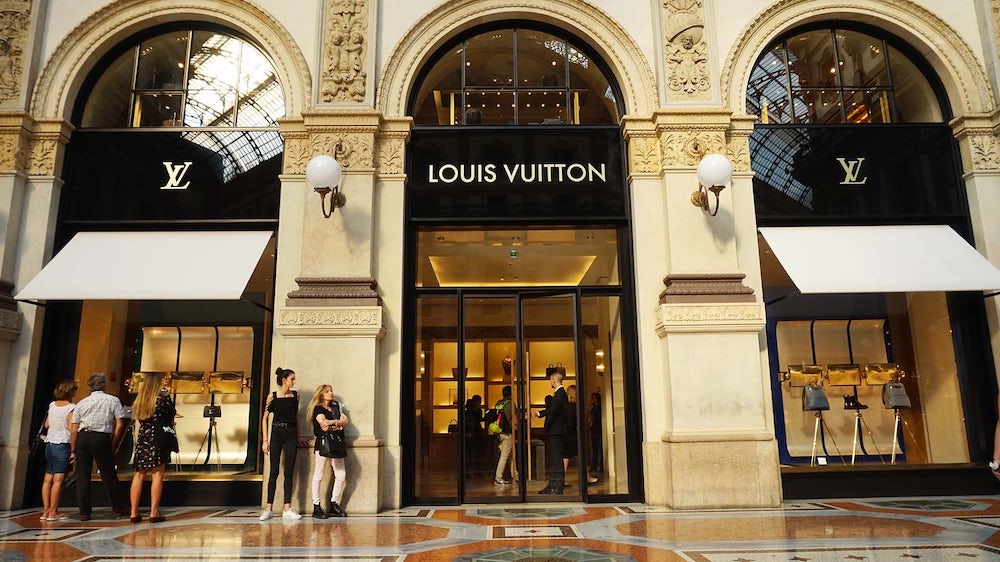The ecommerce wine retailing guide. Like many industries, wine experienced exponential online sales growth in large part because of the global pandemic. Closures led wine producers and retailers, and even restaurants, to go digital—embracing ecommerce as a viable solution to get products to customers. Even in the case of retail bottle shops and restaurants, buyers could select their products online and pick them up in-store or curbside for maximum flexibility in shopping.
Alcohol sales grew to $6 billion in 2021, according to an industry report by Rabobank. That 131% growth from $2.6 billion in 2019 is remarkable. In these two years, sales of alcohol online jumped up to 4%, whereas before it was nearly 2%. More wine was ordered online by the end of the year over any other prior year, according to a Forbes report.
This trend was already on the move before closures forced new selling options. Millennials —and even Gen Z—are very into wine, turning a dated hobby and dining experience for older generations into something far more accessible and part of their repertoire. Because this demographic is driving the direct-to-consumer (DTC) conversation, there’s a synergy between the external forces (global pandemic) and the market trajectory of convenience, belonging, and personalisation. Ecommerce increasingly positions itself as an important solution to capture new customers and remain as a retention pathway.
Here, we’ll explore why wine retailing is the next DTC trend, surpassing temporary pandemic growth, by explaining its past and current DTC industry landscape, and some of the tricky limitations like compliance and taxes. Finally, we’ll unpack some of the key strategies for success in bringing the wine industry forward into the future of shopping.
There is no “going back” to how wine retailing was before.
The wine buyer: Who, how, and where?
Wineries have relied on the whimsy their business can provide to buyers. Vineyards are inherently beautiful pieces of land; rows of vines dotted with rose bushes to fend off insects settling on grapes. Acres of land have become both a place of refuge and relaxation: people love to visit wineries as a means of getting out of the city for a while, reconnecting with the earth, or even participating and being privy to the process of how their wine is made.
Wineries, across the world, aren’t discerning in their demographic: for those who appreciate this realm of beauty, a vineyard is a perfect destination. There is a myriad of wine retailing options for wine fans. The tasting room as an exclusive sales route was shaken by the pandemic, forcing producers to think of new ways to sell their inventories of wine.
But it has also forced this industry to understand that new strategies deserve a more permanent spot in their selling rotation. DTC ecommerce is an intuitive evolution of this process: instead of going directly to the winery for a bottle, the winery becomes their website and buyers can select what they want, when, and how many. Buyers can if not exactly replicate the experience of visiting their favourite winery, and enjoy in the comfort of their own home both the wine and the memory.
Adding DTC ecommerce to the mix for wine producers of any scale is smart for both brand affinity, sales, and return customers. In 2020, the value of DTC wine shipments in the U.S. reached nearly $4 billion, according to Statista. It’s hard to overstate the sheer importance of this industry coming online. From the Silicon Valley State of Wine Report, online sales from wineries to customers was nearly 10%, but the more striking news is that in 2021 with vaccinations and spaces opening up to the public across the country, a winery’s online sales only lowered to 9.1%.
Generationally, even though reducing buyers to just this segment isn’t always helpful to them, millennials and Gen Z, especially when they come of legal drinking age, gravitate toward technologically-based buying solutions. Reports vary on how crucial this group is: either they are going to save the wine industry or they are not. And while buying trends like this do fluctuate, at the core of every millennial or Gen Z buyer is the innate act that they can get anything they want at their fingertips via their phones.

Younger buyers enjoy diversity in their wine experiences. It may begin with a glass at a restaurant or a local wine bar but it spins out into going away to wineries for a weekend and purchasing several bottles at different locations or ordering directly from a favourite winery that can deliver straight to their home. Sometimes, buyers simply grab what’s available at their neighbourhood liquor or wine retailing store. Because this demographic is more concerned with crafting an experience they want, more purchasing options must be available to them.
When it comes to DTC, millennials are the current driving force behind those brands, according to Retail Dive. DTC brands have been exploding in the market, giving way for buyer personalisation and community, as well as a directness for buyers to know exactly where and to who their money is going. Post-pandemic, nearly 71% of those in the report said they would support online and offline shopping. This group—approximately ages 25-34— has both experienced the world with and without technology. Their adoption of brand-specific apps for purchasing or buy now, pay later instalments, as a couple of examples, is making any company think about how to keep this buyer engaged long term. This won’t stop as they begin to age: as technology leans hard into the metaverse or AR/VR, while DTC likely evolves beyond its current capabilities, new sales strategies will be crucial to adhere to their needs, and the needs of the tech-first buying generations to come.
What to consider when wine retailing online
Coming online takes more than a website setup. It’s important to be mindful of what needs to be done before (and during) to get a product to customers. This will make for a smooth buying experience for both customer and seller, which is the first step. It’s not enough anymore to simply be online but to have a great online experience from the first visit piquing interest through to checkout. In every area, a brand needs to stand out.
Here are a few considerations to focus on first:
Browsing
- Confirming age online: Legal drinking ages vary all over the world but ensure that the customer browsing adheres to the Minimum Legal Drinking Age laws to purchase alcohol.
- Product categories: Wine is an expansive space, covering geography, grape types, and production. Some buyers know what they are looking for, like a juicy grenache or buttery chardonnay. These days, natural and organic wines are coming to the fore, and many exclusively seek out those brands. Create intuitive, smart product categories that will help buyers sort through all of the SKUs available to them. Sort by varietal or region, with special releases or personable, brand-specific categories.
- Branding: Because there are so many different types of wine, and flavour palettes differ from wine taster to wine taster, it has never been more important than now to stand out in the crowded space. If a wine tastes freaky, and its label doesn’t suggest that, say so!
Compliance and tax
A vital part of wine selling, especially in the United States, is cross-state compliance rules and taxes. For American wine producers, selling wine online comes with a few big-time limitations. Prohibition and post-Prohibition era laws are still in effect in some parts of the country (“wet counties” and “dry counties,” as it were, and the Three-Tier System.) At the state level, the majority of states can sell directly to their customers in other states, except Utah and Mississippi, which prohibit DTC entirely. There are other tricky caveats, such as New Jersey limiting the wineries that are eligible for selling permits, and some of Florida’s dry counties where products just cannot be sent.
This means it’s crucial to check if selling direct-to-consumer is licensed by the destination state before sending it out. Building that into the sales process online will help.
Because the Three-Tier system is complicated, it’s important to understand which taxes are incurred during the process and where, and which ones consumers may absorb.
There are four main taxes in the U.S.:
- Federal excise tax: This tax must be paid before products are sold to consumers or wholesalers
- State excise tax: This tax is included in the total cost of producing the product. The amount of tax differs from state and by a DTC seller or non-resident seller.
- Sales tax: States usually require a sales tax to be paid, except for the following: New Hampshire, Oregon, Montana, Alaska, and Delaware. This is a helpful visual guide on where the lowest state tax rates are compared to the highest.
- Mark-up tax: This tax is concerned with the retail value of the product and is a combination of sales and excise tax. It’s not required in all states.
Some other considerations include:
- Research and understand where wine is allowed to be shipped to
- Label boxes with alcohol content notice
- Ensure boxes adhere to volume limits per purchase/person
- Work with specific couriers who can gather legal age information from buyer
These become barriers to entry into the industry without clear solutions and strategies. For DTC wine sellers, an intuitive system to solve different sales taxes for different states and regions, even down to counties and streets, is crucial to minimise mental load and maximise customer reach.
Sales strategies for the future wine
The pathway for bringing such an old, important industry online already started before the pandemic, but the acceleration of convenience, speed, and an enjoyable buying experience is what’s going to keep people coming back.
That said, here are some key ways to keep the integrity of the industry while online:
- Human-centric selling: Buyers are still going to need an experienced wine seller to guide them through a winery or wine retailer’s offerings, explaining how one merlot differs from another and why that might be the best option for that customer. It’s possible to keep this spirit, for example, by having virtual wine assistants or detailed product descriptions, wine pairings, and tasting notes. To replicate the in-store service online as best as possible for buyers is crucial to ensure they feel supported in their wine-buying journey, whether they are seasoned wine connoisseurs or new to the industry.
- Hyper-personalisation and personality: One thing about DTC buyers is they love to feel a connection with the brand they are buying from; a way to show off their personality. Stick to the integrity and story of your wine brand but embrace the new ways of storytelling and marketing that highlight how your wine is different from its competitors. By writing engaging product descriptions, showcasing local artists on bottles and designs on the website, and more, there is a myriad of ways to emphasise a wine brand’s uniqueness. Embrace other unique ways to sell products with merchandising or special releases.
It is essential to adopt technology to embrace online highest returning experiences enjoyed by customers elsewhere in their lives. Email marketing for example can now be equally personalised to each individual, in comparison to its peers leaves it standing as far as ROIi is concerned. The introduction of hyper-personalisation for email marketing has surpassed all the comers by a country mile.
The distinctions between the leading hyper-personalisation software vendors are vast They use every facet of first-party data collected including much not stored even by the most advanced platforms themselves, but rather by a specialist SaaS plugin that retrieves the information for you. It then analyses it to identify what each unique consumer is most likely to buy next and when. When doing your calculations take into account that it is 100% autonomous, so deduct all staff overheads. Imagine knowing exactly what wine each person will buy next, and having a means to be able to present that exact item to them, before anyone else gets a look in.
Abhorring segmentation, as the practice of shutting the wrong people in a room together always works, not. Only you have the benefit of the knowledge of everything going off on your website. There is a pattern created by each consumer’s activity, each visit for example typically leaves 100 impressions per visit, Each suggests a strategy both rare and personal to that one person. Not forgetting what they don’t look at or fail to be attracted to at that instant is equally important to clear the way for things that are. Market research companies including McKinsey and Statista both offer a figure over 20x the return of traditional email marketing. - Frictionless online buying: Slow, archaic websites turn customers away instantly. Additionally, not everyone is going to be purchasing on a desktop browser. Enable mobile purchasing by investing in a website with that capability. Accelerated checkouts enable customers to get through faster and with less fuss. The bonus of order tracking from purchase to delivery, too, brings a buyer along on the journey in a transparent way.
Selling wine online to buyers outside of the club or subscription model straight from the winery is a key way to participate in the future of ecommerce and maintain a strong customer relationship. The potential complexities of selling online shouldn’t deter a brand or retailer from adopting this technologically savvy, flexible avenue for their buyers.





